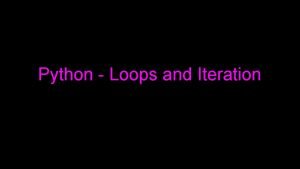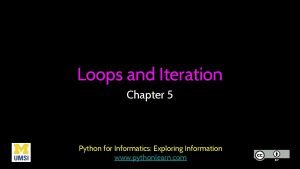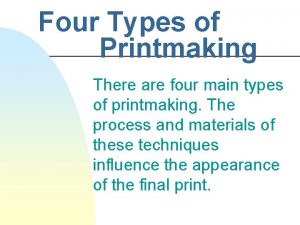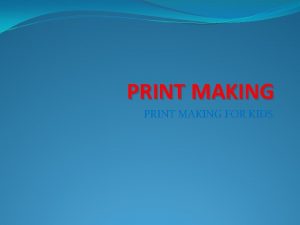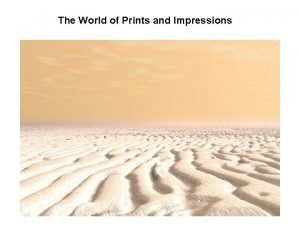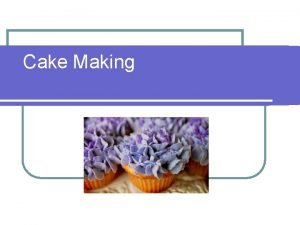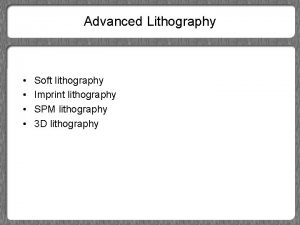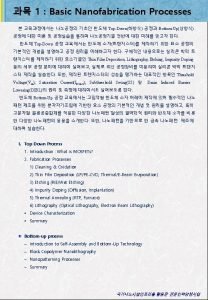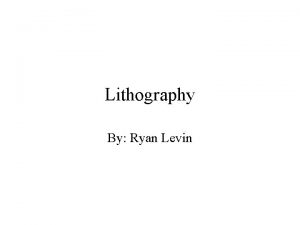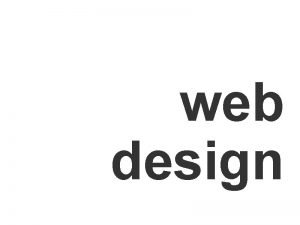Print making methods Lithography Lithography was the first






- Slides: 6

Print making methods

Lithography • Lithography was the first fundamentally new printing technology since the invention of relief printing in the fifteenth century. It is a mechanical planography process in which the printing and non-printing areas of the plate are all at the same level, as opposed to intaglio and relief processes in which the design is cut into the printing block. Lithography is based on the chemical repellence of oil and water.

Screen printing • Silk screen or "serigraphy" originated in China and found its way to the West in the 15 th century. It's a stencil process based on the porosity (open weave) of silk (or nylon) which allows ink to pass through the areas which are not "stopped" with glue, varnish or plastic stencils. One or more layers of ink are applied with a squeegee, each one covering the open areas of succeeding screens until the final composite image is achieved. Photographic transfers, both in line and halftone, can also be fixed to the screen with a light-sensitive emulsion.

Engraving • In engraving, the design is cut into metal with a graver or burin. The burin is a steel rod with a square or lozenge-shaped section and a slightly bent shank. The cutting is accomplished by pushing the burin into the metal plate. The deeper it penetrates into the metal, the wider the line; variations in depth create the swelling tapering character of the engraved line. After the engraving is finished, the slight burr raised by the graver is cleaned off with a scraper. The engraved line is so sharp and clean that it asserts itself even if cut over a densely etched area

Etching • Etching is a process in which lines or textures are bitten or etched into a metal plate with a variety of mordents acids. The metal plate is first covered with an acid-resistant coating ground. The design is then scratched or pressed into the ground, exposing the metal in these areas. Finally, the plate is submerged in an acid solution until the desired depth and width in the exposed areas is reached

STENCIL • In stencilling, one of the simplest methods of duplication, the design is cut of paper (or any other suitable thin, strong material) and is then printed by rubbing, rolling, or spraying paint through the cutout areas
